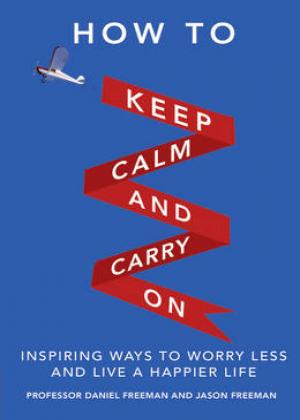 Women’s vulnerability to mental illness may be underestimated by general public, cautions leading scientist.
Women’s vulnerability to mental illness may be underestimated by general public, cautions leading scientist.
The vulnerability of women to mental illness is being under-estimated by the general public and many mental health professionals too. Two-thirds of people believe that rates of psychological problems are the same in men and women, according to a new survey. Yet research suggests that women are between 20 to 40 per cent more likely than men to suffer mental health issues in any given year.
The survey of 500 people (204 men and 296 women) also revealed that most believe men are judged more harshly for showing emotional problems, with 76 percent reporting that a man saying they are miserable or anxious is generally considered worse than a woman saying the same thing.
However, while 43 percent of respondents believe that depression is as widespread in men as in women, 40 percent correctly say the condition is twice as prevalent among women. Similarly while 37 percent of those questioned believe rates of anxiety disorder are the same for both sexes, 50 per cent correctly say women are twice as likely to suffer from anxiety as men. Perhaps unsurprisingly, more than 60 per cent of people believe that alcohol problems are more common among men than women. But this is one area where women are more harshly judged with 89 percent stating that a woman getting drunk is generally considered worse than a man doing likewise.
The survey was carried out by Professor Daniel Freeman of the University of Oxford, in collaboration with Oxford University Press. Professor Freeman, the author of The Stressed Sex, which addresses the gender imbalance among those suffering mental illness, said: ‘The survey provides a fascinating – and unprecedented – initial insight into everyday beliefs about gender and mental health, and the behaviours that can help determine our psychological wellbeing.’
As Professor Freeman points out, the research also highlights the common misconceptions held by both the public and many medical professionals. ‘The respondents underestimated the extent of psychological problems in women – and so do most mental health professionals.
‘The general view seems to be that overall rates of mental health are virtually identical for men and women, but when you examine the results of national health surveys the reality is quite different.
He added: ‘Women outnumber men for psychological disorders as a whole. Indeed the most comprehensive of the national surveys suggests rates are almost 50 percent higher in women than in men. However, this is not an issue that receives the attention it deserves.’
Boys don’t cry
The survey shows that we tend to be much harder on men who express fear or unhappiness than women. Professor Freeman said ‘While girls may be indulged in their fears and worries, boys are taught to overcome them. Big boys don’t cry. It’s not simply a case of boys learning to mask their feelings, though doubtless that happens too: they may actually feel less anxiety. When we avoid what we fear, we deprive ourselves of the opportunity to discover that, in fact, we can handle the situation. And thus our fear is maintained. But if we face up to our fear, it will dwindle and die.”
Women’s greater vulnerability to psychological problems, warns Professor Freeman, represents a major public health issue. “The lack of attention given to the issue of gender and mental health is striking – which no doubt helps explain why the survey respondents consistently underestimated the scale of the problem among women. By ignoring this important issue we deprive ourselves of the opportunity to change the situation for the better.”
The Stressed Sex Survey
Are men or women more likely to have a psychological disorder?
Men and women have about the same rates: 66%
Women have more: 25%
Men have more: 9.0%
Do men or women have more stressful lives?
Men have more stressful lives: 5%
Men and women have equally stressful lives: 77%
Women have more stressful lives: 18%
Do rates of depression differ between men and women?
Four times more common in men: 0%
Twice as common in men: 12%
The rate is equal in men and women: 43%
Twice as common in women: 40%
Four times as common in women: 4%
Do rates of alcohol disorders differ between men and women?
Six times more common in men: 6%
Three times more common in men: 63%
The rate is equal in men and women: 28%
Three times as common in women: 2%
Six times as common in women: 0.0%
Do rates of anxiety differ between men and women?
Four times more common in men: 0%
Twice as common in men: 5%
The rate is equal in men and women: 37%
Twice as common in women: 50%
Four times as common in women: 8%
In general, are men and women judged differently for getting drunk?
Men and women are judged equally: 10%
A woman getting drunk is generally considered worse than a man getting drunk: 89%
A man getting drunk is generally considered worse than a woman getting drunk: 1%
In general, are men and women judged differently for saying that they are miserable or anxious?
Men and women are judged equally: 15%
A man saying they are miserable or anxious is generally considered worse than a woman saying the same thing: 76%
A woman saying they are miserable or anxious is generally considered worse than a man saying the same thing: 9%
Do you think the links between gender and mental health receive sufficient attention from health professionals and the general public?
Yes: 30%
No: 70%
 Frost Magazine has teamed up with Pearson — the world’s leading education publisher — to give away copies of essential new self-help guide, How to Keep Calm and Carry On.
Frost Magazine has teamed up with Pearson — the world’s leading education publisher — to give away copies of essential new self-help guide, How to Keep Calm and Carry On.

